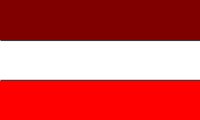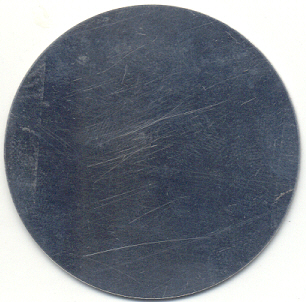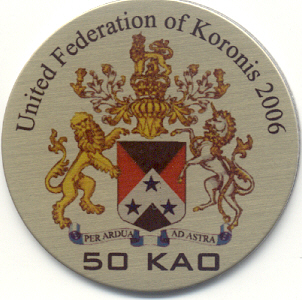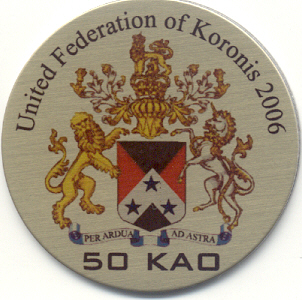|
| United Federation of
Koronis |
| |
 |
|
|
In 1966, The Outer Space Treaty (a.k.a. the Treaty on
Principles Governing the Activities of States in the Exploration and Use of
Outer Space, including the Moon and Other Celestial Bodies) was considered
by the Legal Subcommittee of UNOOSA (United Nations Office for Outer Space
Affairs; they are responsible for promoting international cooperation in the
peaceful uses of outer space) and it was adopted by the UN General Assembly
that same year, in resolution 2222 (XXI). It was ratified by 95 States and
an additional 27 have signed it. The Outer Space Treaty, which provides the
basic framework on international space law, entered into force in October
1967. |
| When Mr.
Wadhwa, who also happens to be a numismatist, became aware of their
“private” nation, he suggested the minting of coins as an additional avenue
to broaden their horizons. “I had heard of small soverign ‘countries’ in
Australia such as Hutt River but was fascinated by the concept of Koronis.”
Thus, combined with Mr. Wadhwa's “interest in things numismatic”, the power
of the internet has led the Federation's founders to a whole new arena. “I
have convinced the members of Koronis to expand beyond their so far insular
existence.” On 26/4/06, The UFK issued its first coins: a set of four in the
denominations of 5, 10, 25 and 50 Kao, under the Federation's responsible of
HRH Prince Ian Stewart. These pieces “were minted using a simple
lithographic transfer onto light metal discs (aluminum).” The 5 and 10 Kao
are silver-finished and single-sided; the 25 and 50 Kao are gold-finished
and double-sided (incidentally, the 10 and 50 Kao are quite large of 50mm).
They are very thin coins, all show the Federation's coat-of-arms. There also
exists one of the five double-sided 5 Kao coins, which were minted solely as
a “trial striking”. The basic unit of currency is the Koro which is divided
into 100 Kao. As most business is conducted on Earth the value of the Koro
has been set as equal to the Australian Dollar. |
|
|
 |
 |
 |
 |
 |
 |
 |
 |
|
|
| According to
the Koronis Federation's official Web-site (http://www.koronisfederation.org/),
“Article II of the Outer Space Treaty governs the appropriation of space
resources. Article II provides that ‘Outer Space, including the moon and
other celestial bodies, is not subject to national appropriation by claim of
sovereignty, by means of use or occupation, or by any other means.’
International lawyers differ in their interpretation of the term ‘national
appropriation.’ Most interpret Article II narrowly to prohibit only national
appropriation while others interpret the clause broadly to prohibit all
forms of appropriation, including private and international appropriation.”
Favoring the narrow interpretation of Article II over the broad one, “the
Koronis family of asteroids were appropriated by the now Monarch” - King
Aramar - “on 22/4/06 to form the United Federation of Koronis.” Though this
collective constitutes many hundreds of small asteroids orbiting between the
planets Mars and Jupiter, the principal activities of Koronis are related to
the 8 larger bodies: 243 Ida (the nominal capital of the Federation), 158
Koronis, 167 Urda, 208 Lacrimosa, 263 Dresda, 277 Elvira, 311 Claudia, and
321 Florintina. “The UFK is primarily a land-based federation,” but because
“the asteroids are currently uninhabitable,” they've “established government
offices on Earth for the purposes of conducting its activities and
relationships. The government of The Federation is a constitutional monarchy
with the appointed members of cabinet (representing each of the 8 main
asteroids) responsible ongoing government business.” In summation, Koronis
is literally the most far-out micro-nation to come down the pike since
Celestia (see my separate listing for this coin-issuing entity). |
|
Mr. Surjit S. Wadhwa as an amateur astronomer (even a
semi-professional, he has published some material in the field of contact
binary stars) who is also a member of state and national associations. His
interest in micronations started after a chance encounter with some
individuals who belonged to a regional amateur astronomy group based in New
South Wales. Mr. Wadhwa accidentally came across this local band of
astronomers in 2005 while visiting friends, and he was accepted as a new
member. This humble coterie of nonprofessional stargazers has chosen to
remain relatively private. They have requested, “for reasons I am not clear
about”, that their identity not be revealed, and Mr. Wadhwa has respected
their wishes. Since becoming associated with Koronis, his understanding of
its early history is that a few (2 or 3) members of the group thought about
forming a micronation project (“space based - what else would you expect”)
in 1988, but had kept this plan of action among themselves. “They made a few
notes but did not really formalise a structure as such.” Like all amateur
groups, theirs contained people “from various vocations including a number
of solicitors/lawyers with an interest in international law.” Their legal
experience led them to believe that there seemed to be a solid legal basis
for the existence of a stellar micro-nation. Though the idea behind the
proposal initially stemmed from a fireside chat, “one of the members looked
into the ‘law’ behind the ‘claiming’ of celestial bodies. This went on for a
number years with some very ‘legal’ discussions at astronomy club meetings.
Unfortunately due to varied circumstances the project layed dormant from
about 1989 until late 1994.” That year, the idea was revived “when a couple
of newer members of the astronomy group suggested forming a ‘country’ and
this led the older members to open their previous notes and formalise The
United Federation of Koronis. Discussions took place again and on this
occasion the legal consensus was that individual claiming of celestial
bodies where not much exploration had taken place could/should be valid. The
lawyers seem to suggest that on places where significant ‘human’ activity
had taken place (e.g. moon and most of the planets) maybe difficult to
justify, similarly they thought that claiming of celestial bodies where
there was no human exploration and unlikely to occur (i.e. most of the known
universe) would also be difficult to lay a claim. This analysis led our
group to consider any celestial bodies which had had some human ‘contact’
but were relatively unexplored, i.e. similar to an unclaimed island in
international waters. Many ideas were floated including comets, moons of the
planets etc however legal opinion was always that there had been too much
exploration to justify a claim. The idea of claiming an asteroid was only
recent and when the Galileo probe visualised 243 Ida - an asteroid with a
moon - the decision was taken. The group did send some letters to the UN
informing them of their action with no reply.” This was repeated in April
2006, after they established a Web-site, again with no reply. “We have not
heard any rejection of our claim from the Secretary General of the UN.” The
Federation is “essentially a small sub-group within the larger amateur
astronomy group.” The club remains isolated “and there is no mention of it
in the amateur astronomy groups monthly newsletters.” |
| |
| |
|
|
|
Micro-Nations |
| |
|
Chiefa Coins |
|
|










